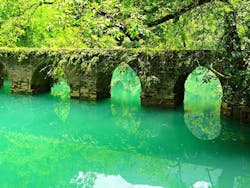China’s Surface Water Quality Has Improved
In 2018, China’s surface water quality improved. According to the country’s environment ministry, more samples taken from river and lakes reaching standards fit for human use.
According to CNBC, China has vowed to take action to “significantly reduce” to the volume of industrial wastewater flowing into the Bohai Sea in the northern part of the country.
Beijing has extended its campaign to tackle pollution from air to water, according to CNBC. The extension is attempting to clean up the streams flowing through Chinese cities and improve the water quality of its natural reserves.
Water quality in most of China’s major waterways including the Yellow, Huai, Yangtze and Pear rivers improved in 2018. According to CNBC, those in northeastern China such as the Liao and Songhua were found to be even more polluted than in 2017.
The Ministry of Ecology and Environment (MEE) said among the 1,940 samples from across China last year, 71% were considered grade III of better, meaning they were suitable for drinking and fishing.
According to CNBC, the amount of “below grade V” water that cannot be used in either agriculture or industry, fell by 1.6 percentage points to 6.7% in 2018.
Phosphorus and ammonium nitrate were identified as the major pollutants of water pollution in a statement from MEE. The chemicals mainly come from industrial wastewater, pesticides and organic fertilizers, according to CNBC. Chemical oxygen demand was also found to exceed the national level in the “below grade V” rivers.
